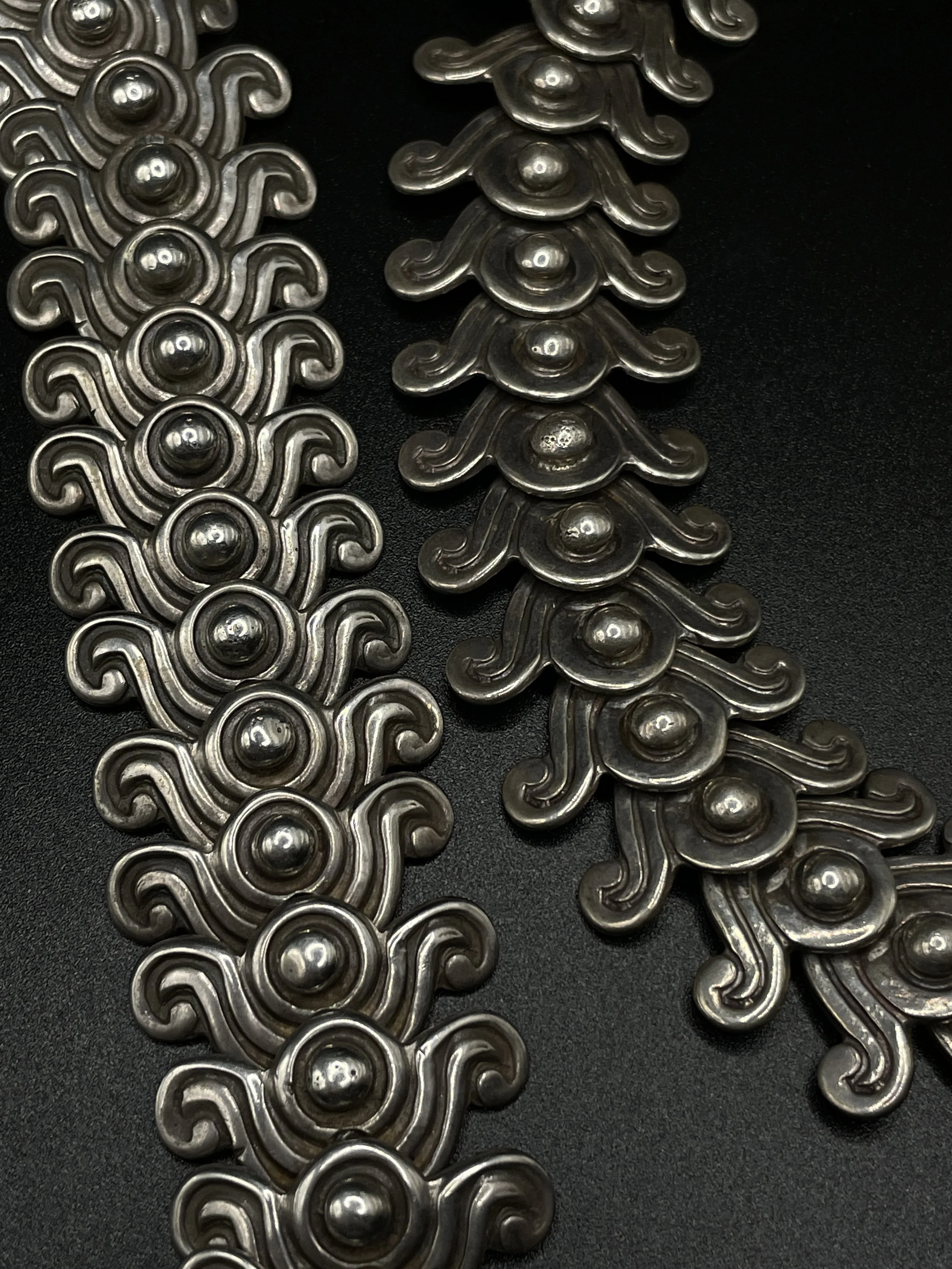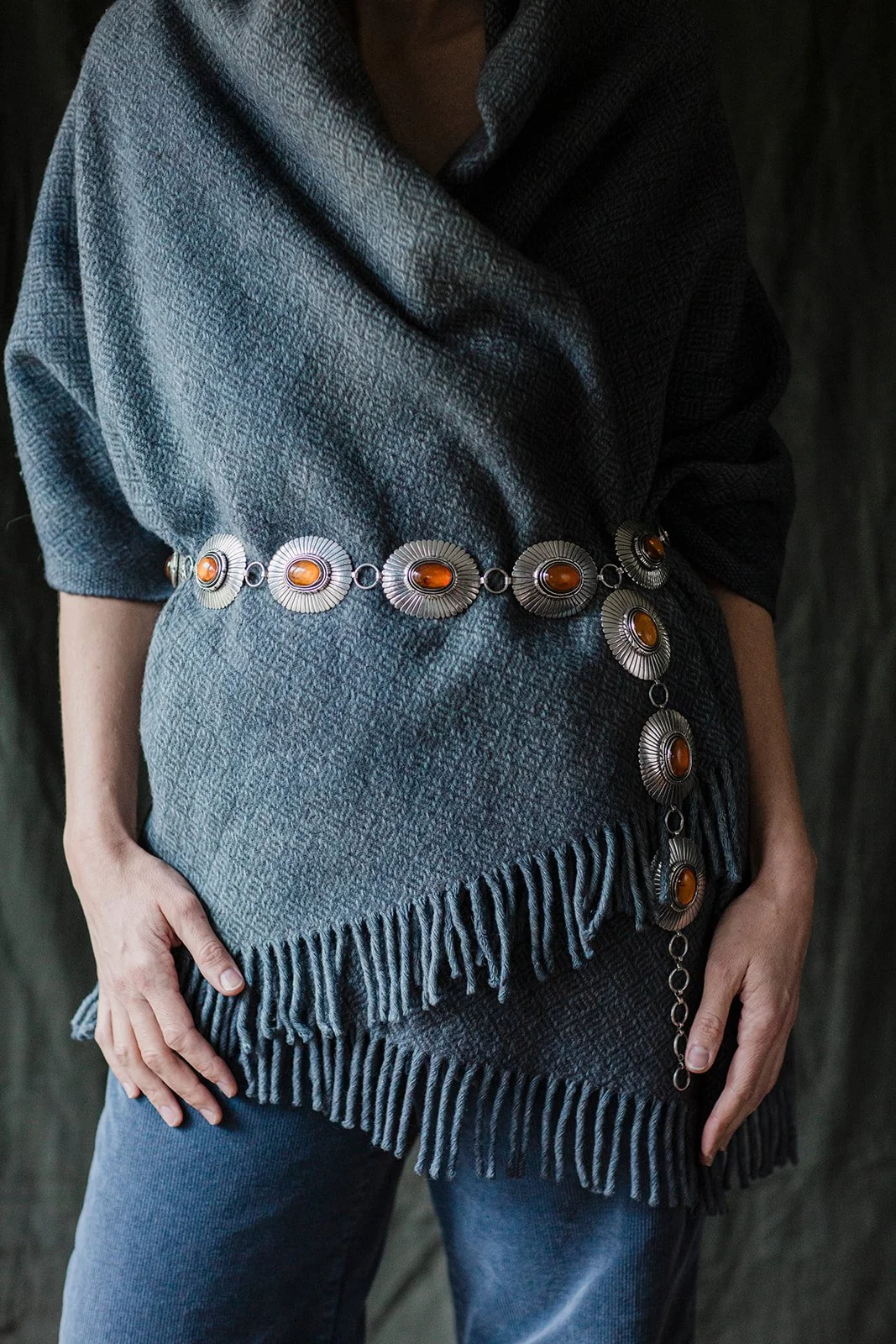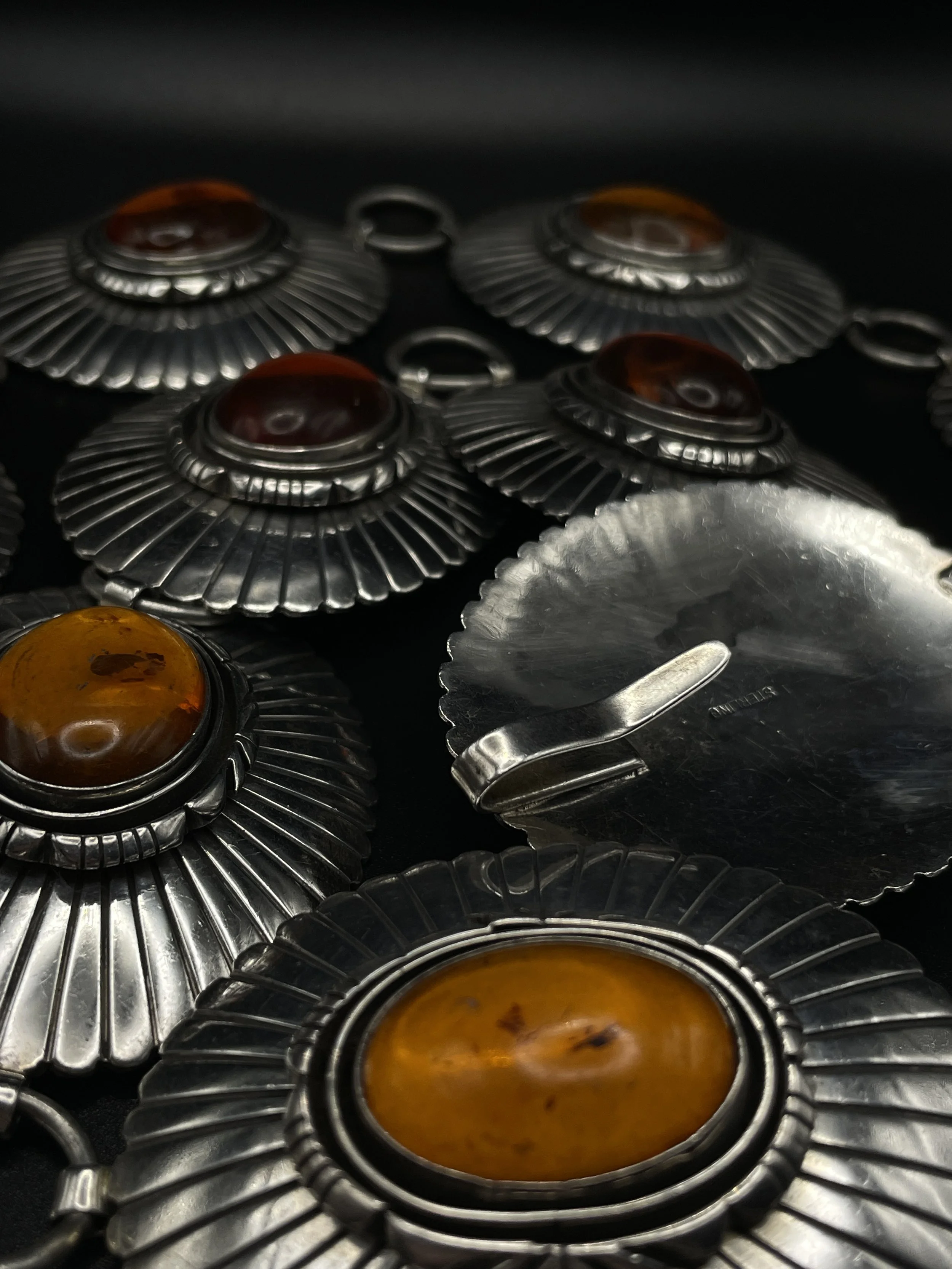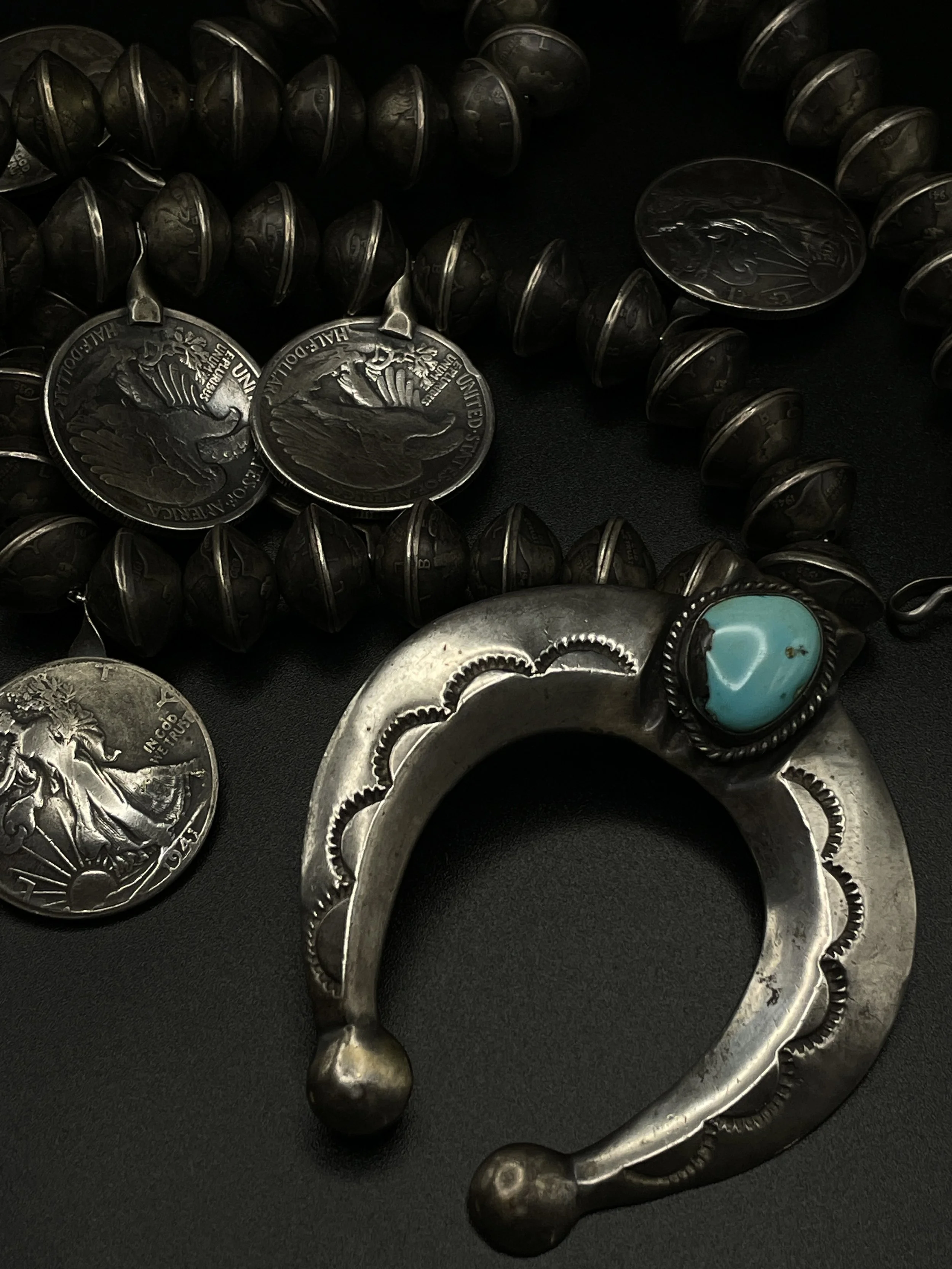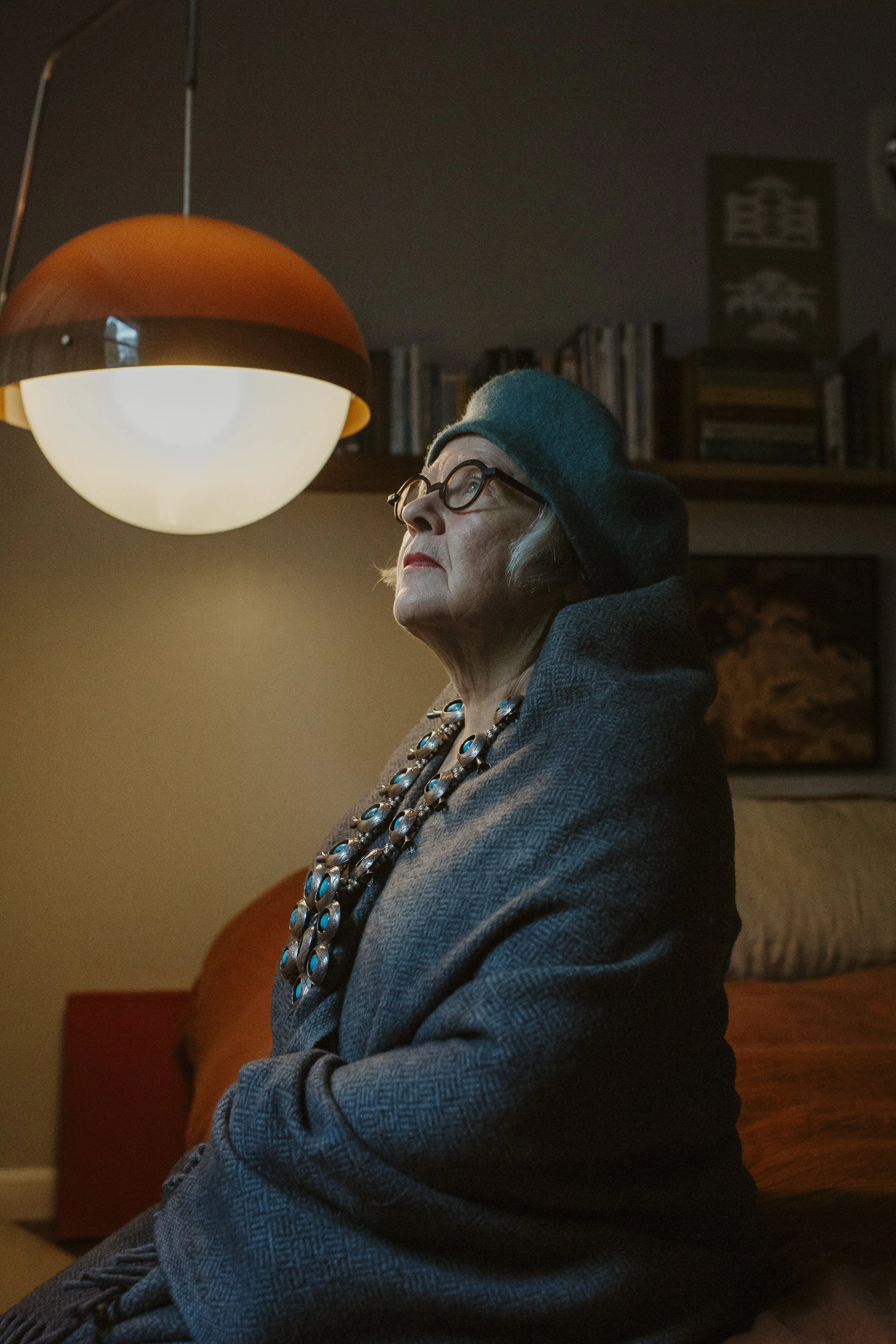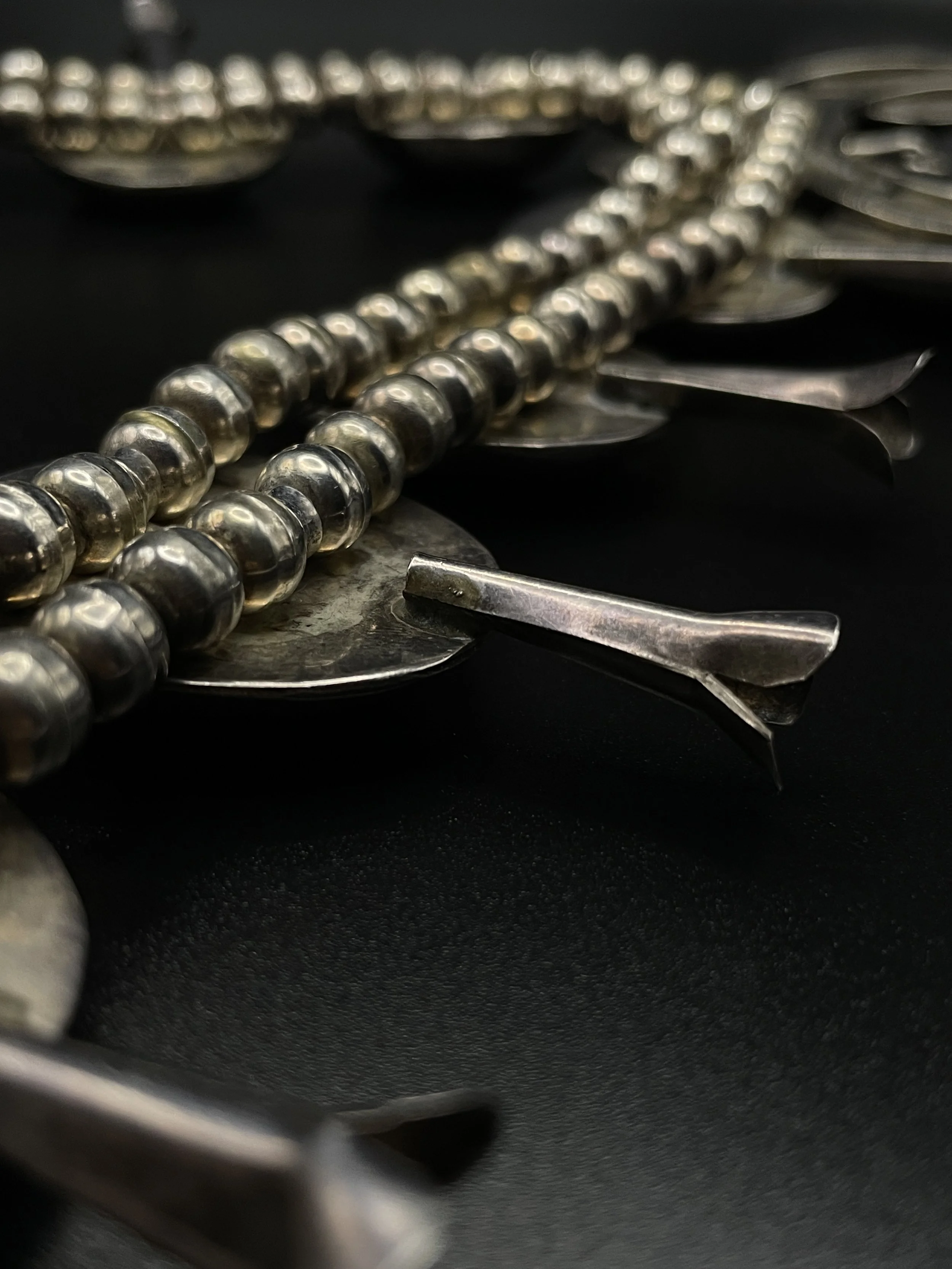Necklace and Earring Set: Zuni Loretta Maetza Needlepoint Squash Blossom
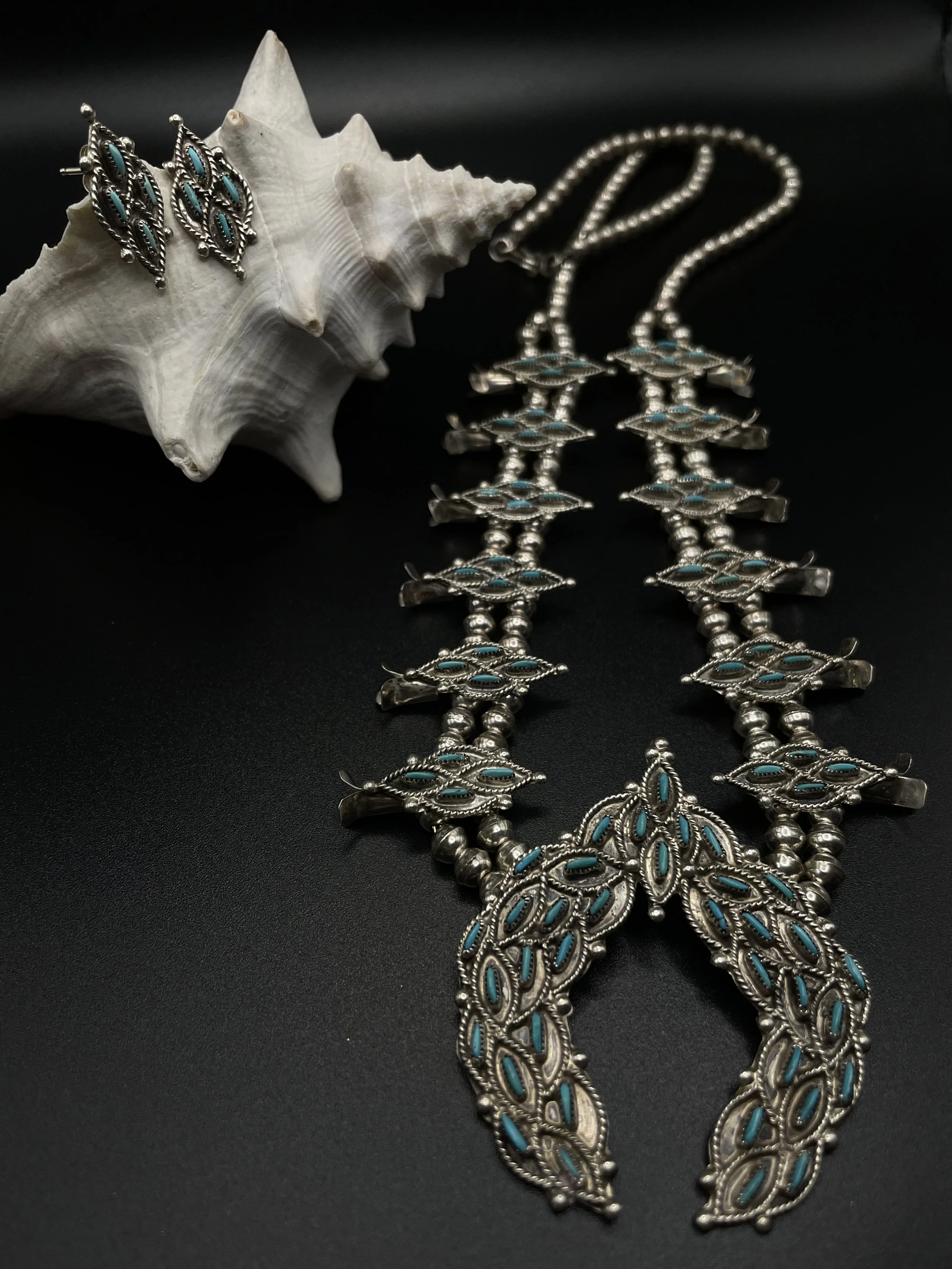
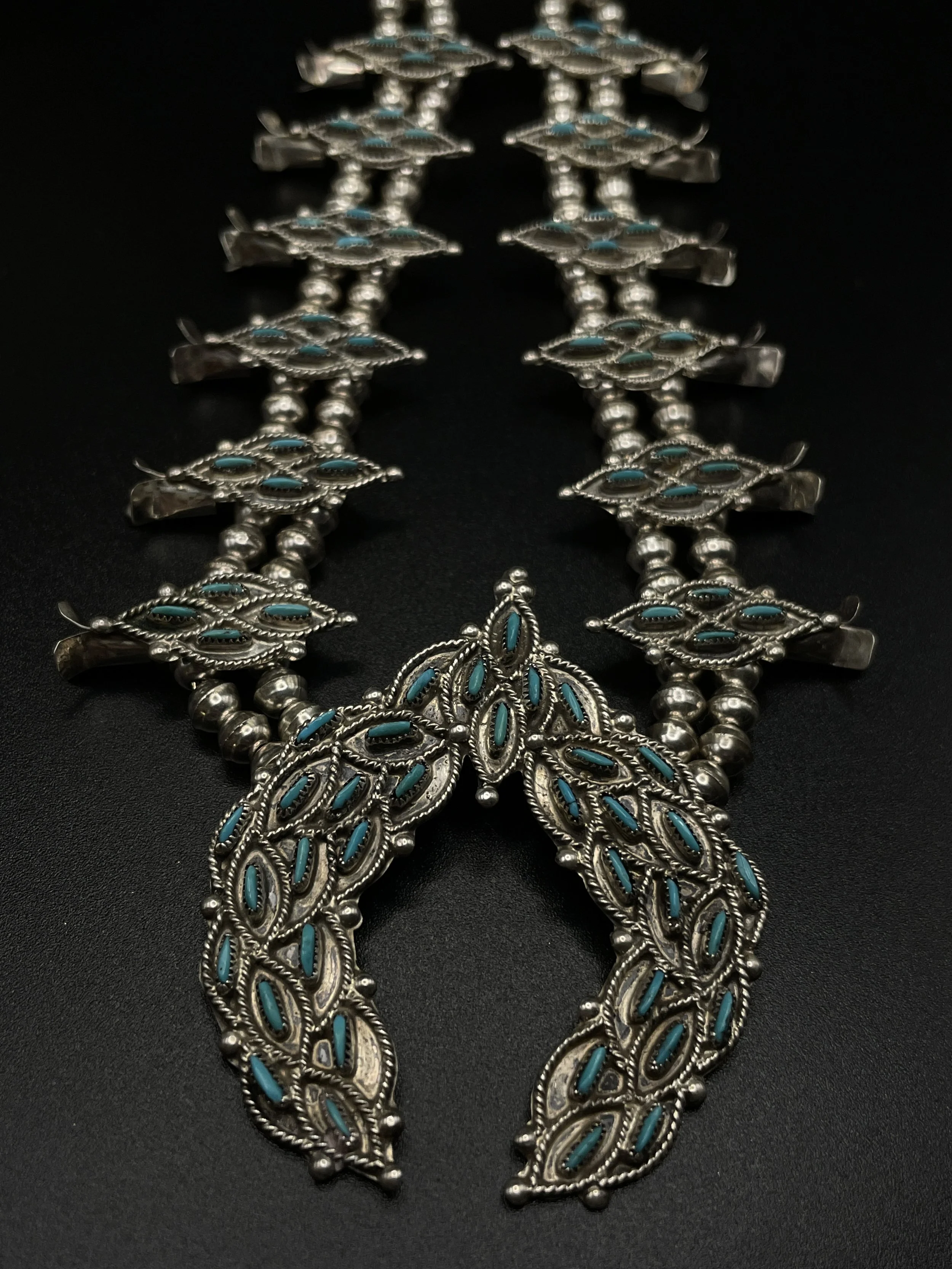
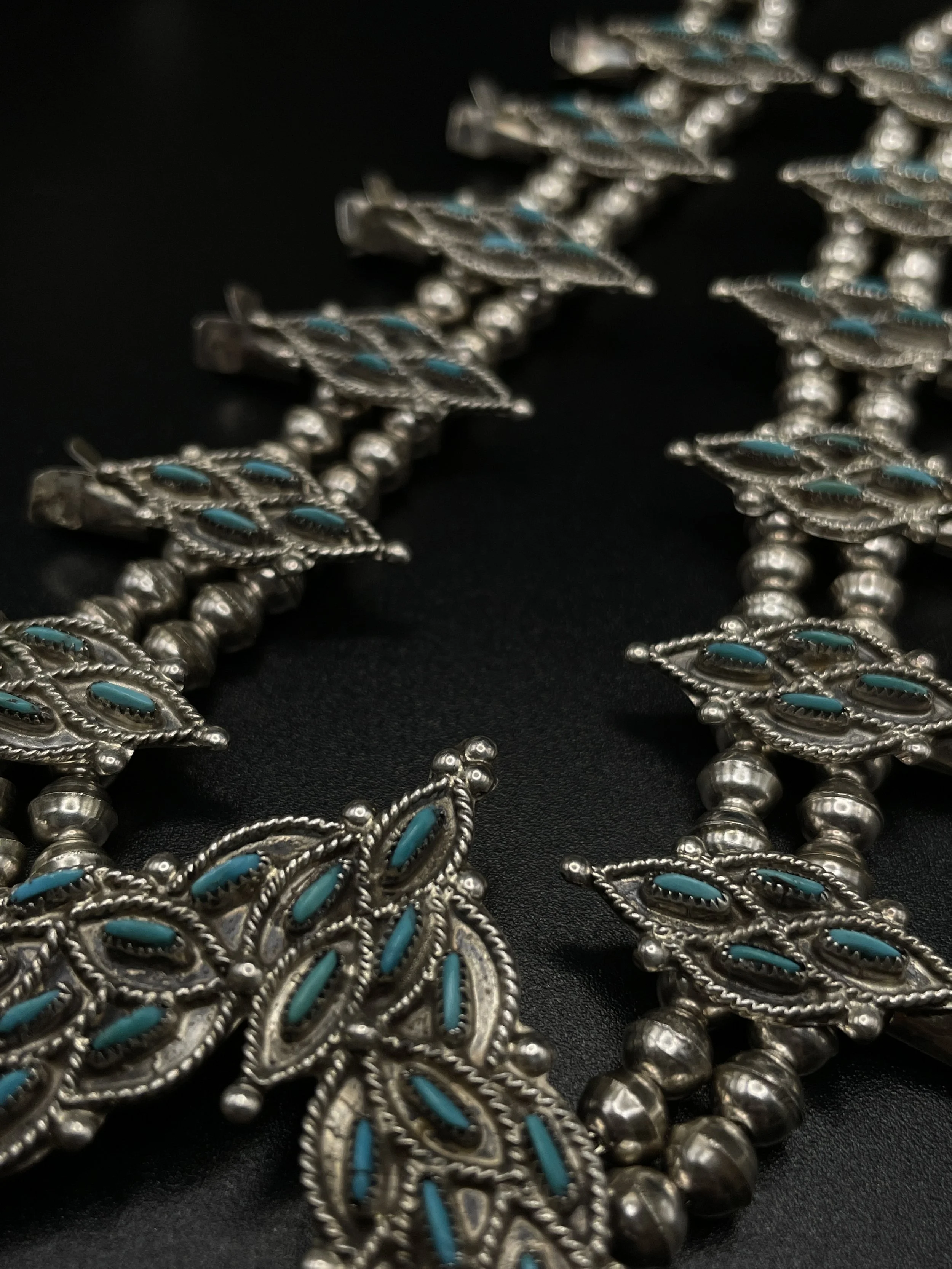

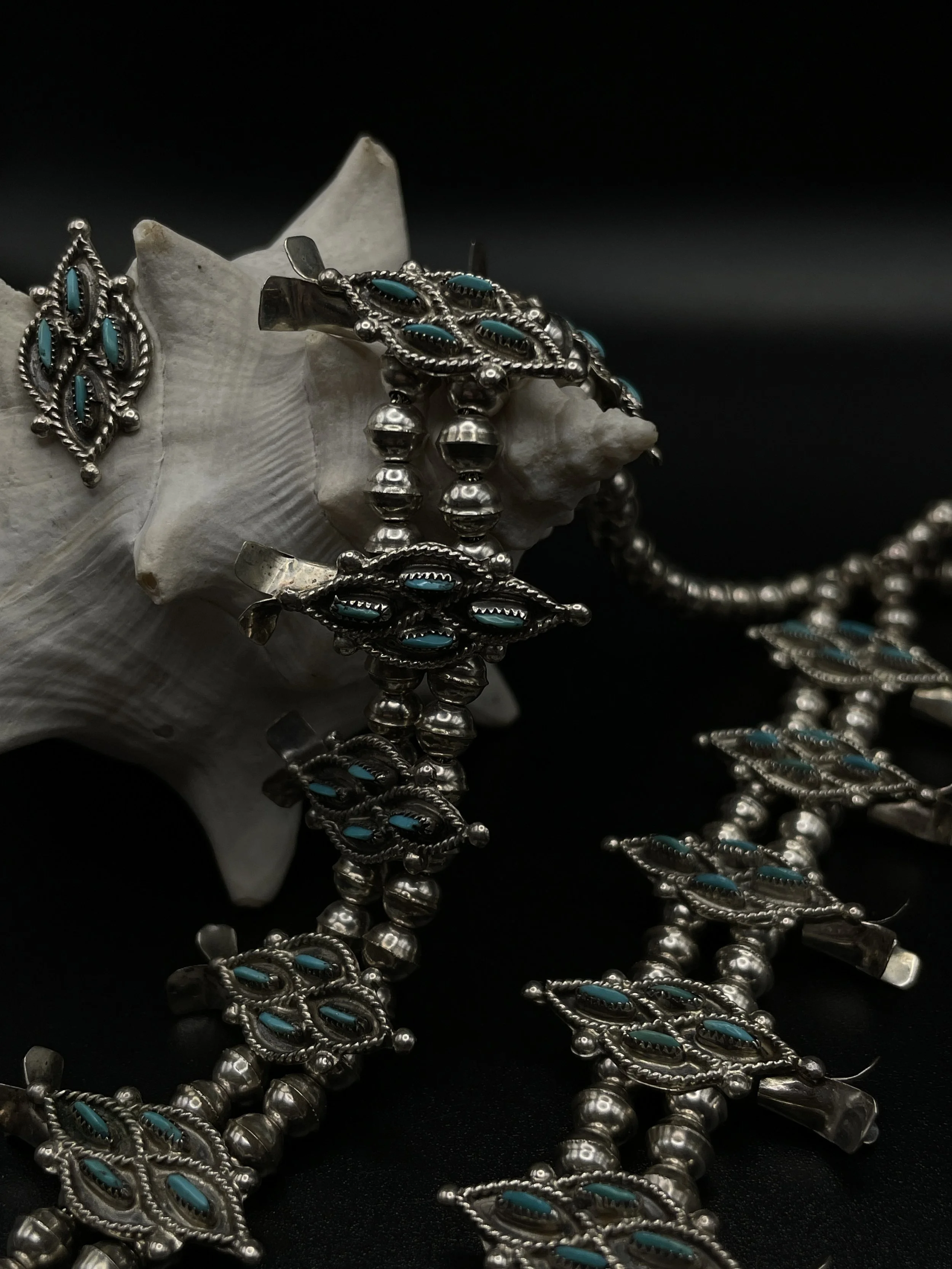

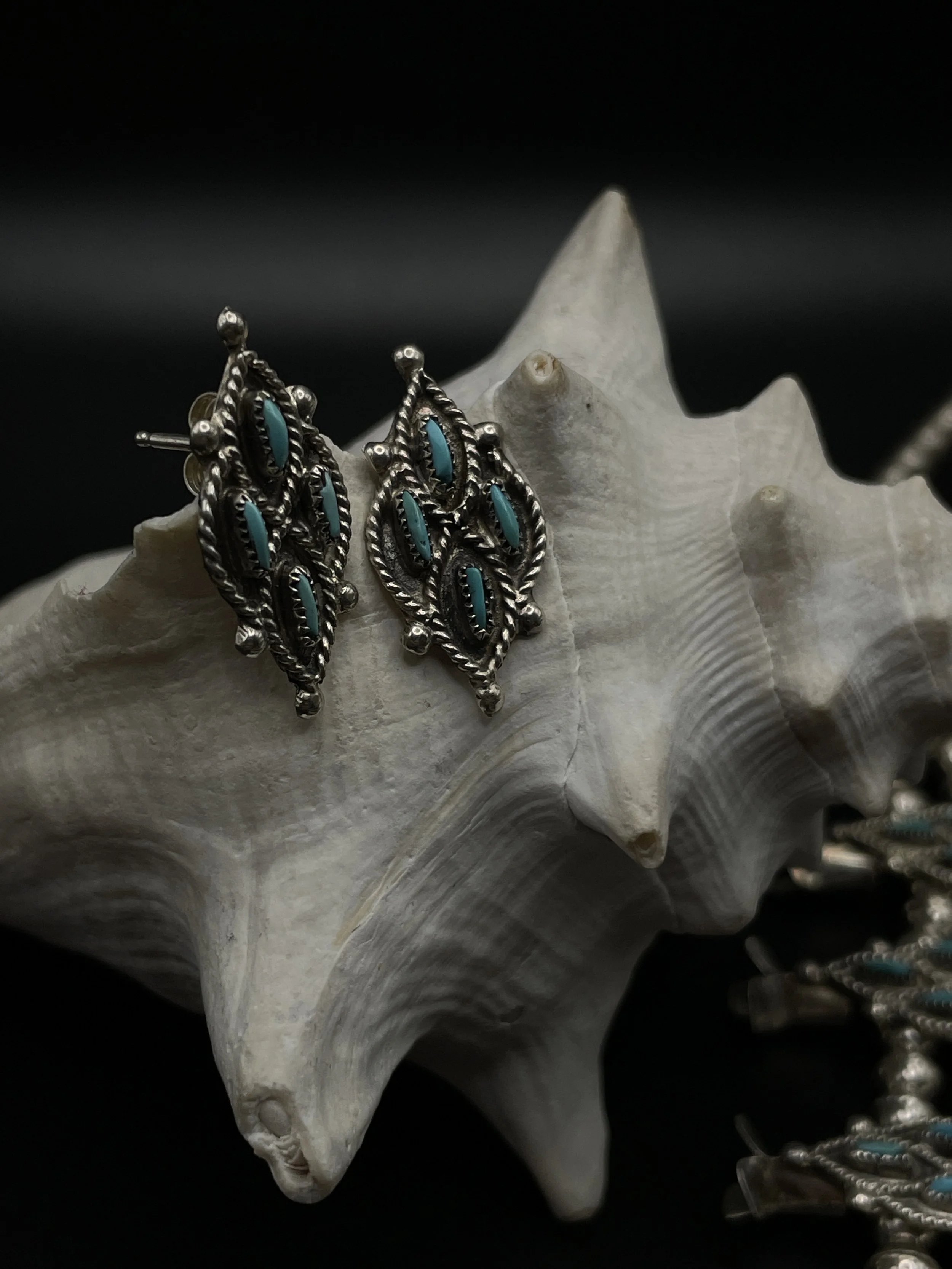
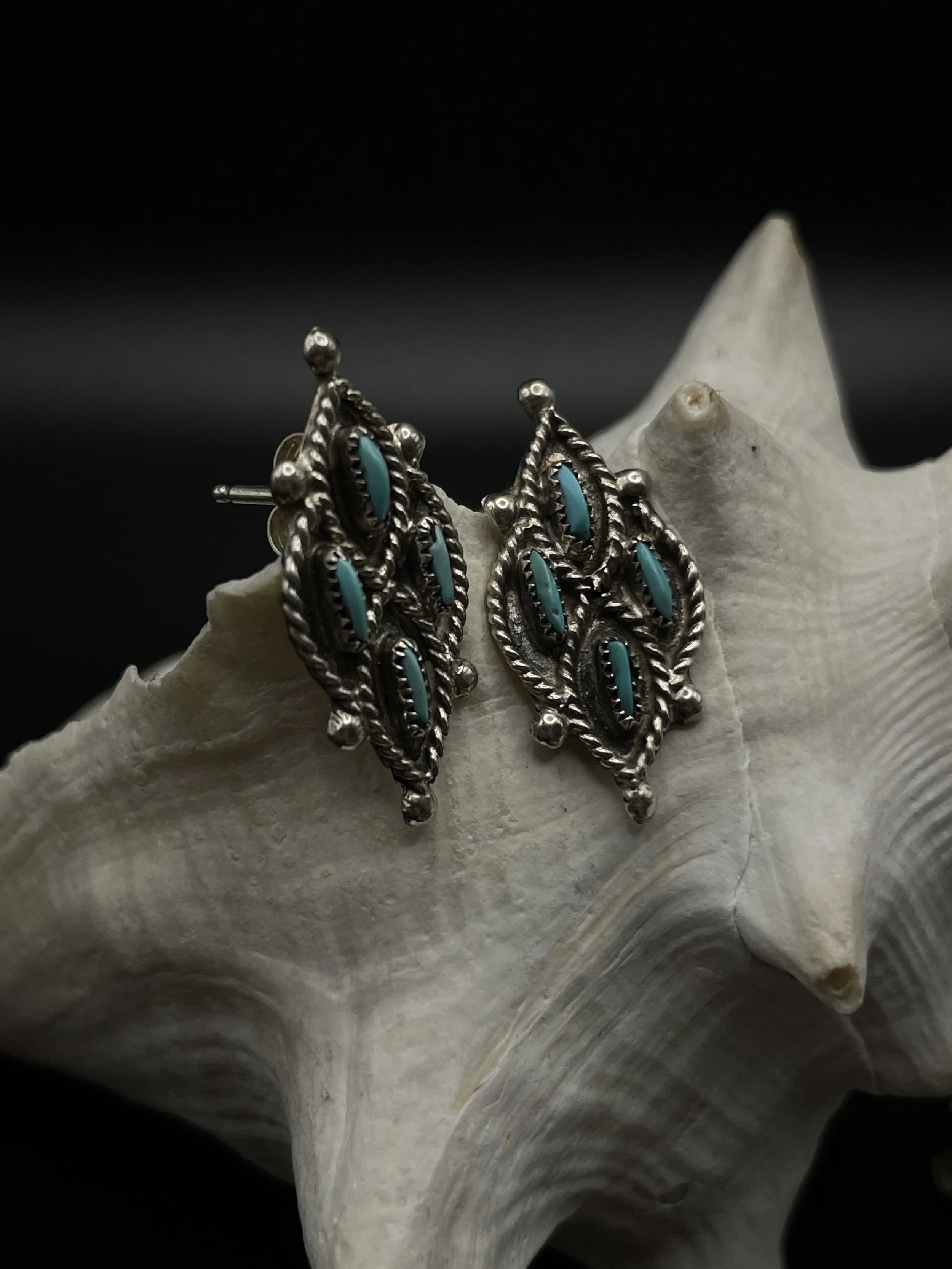



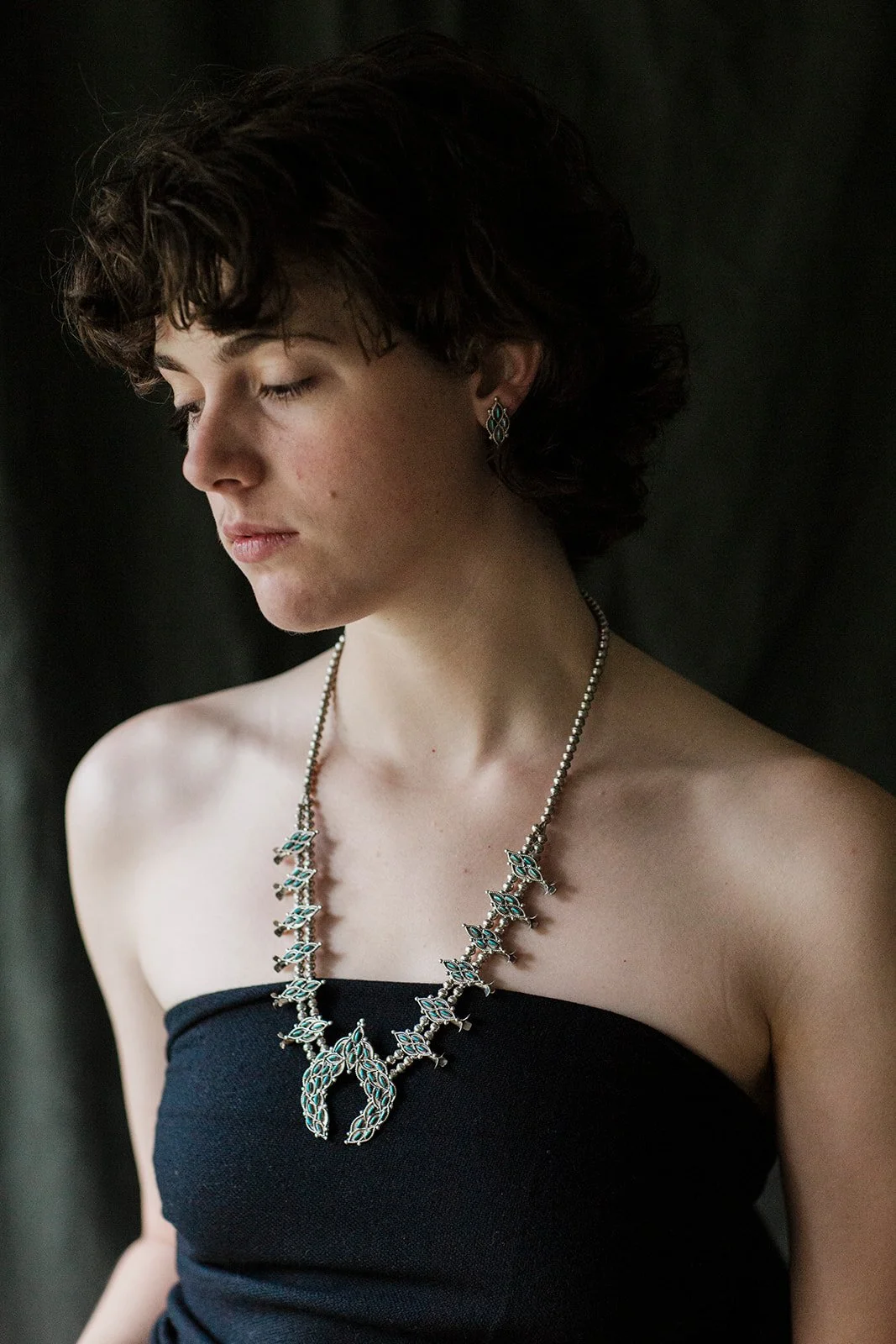


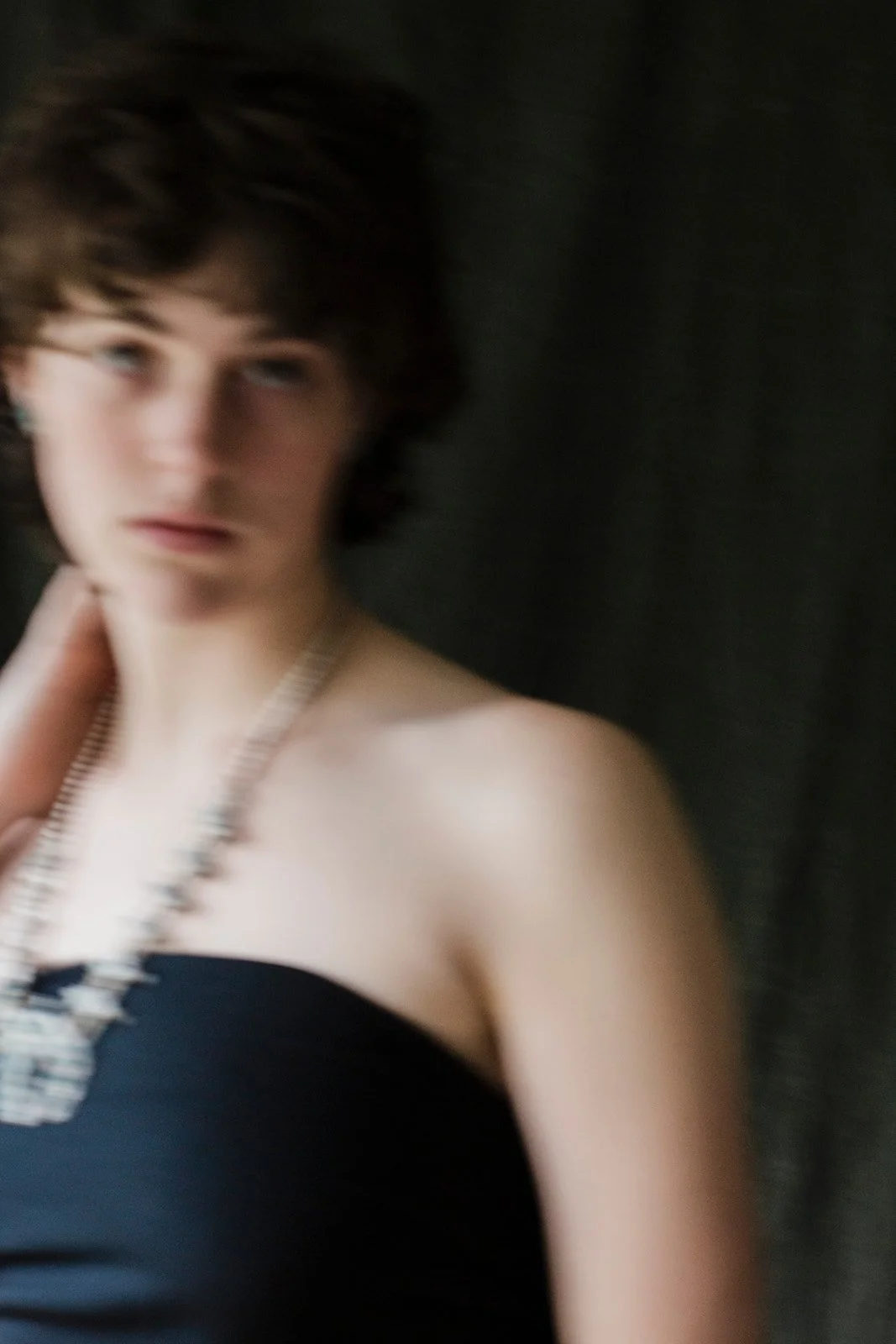
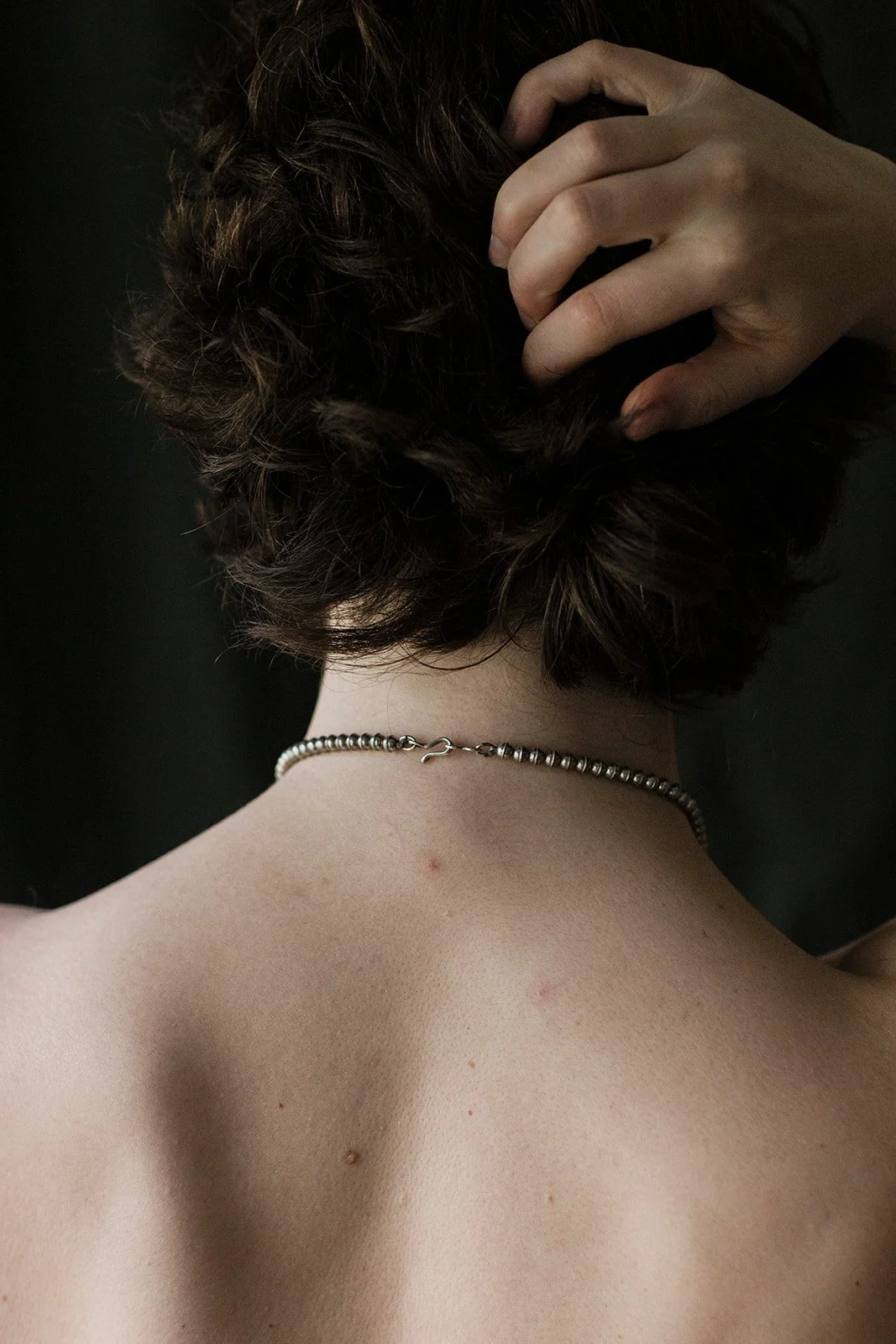
Necklace and Earring Set: Zuni Loretta Maetza Needlepoint Squash Blossom
This petite, vintage, squash blossom is an excellent example of how lace-like needlepoint designs can be when intricately crafted. The stones look delicate, but the piece in the hand has some weight and should not to be underestimated. There is a lot of complex metalwork that went into making this necklace set look so refined. The amount of uniform detail in such small spaces is impressive. I adore the size of the stones and the accent of metal balls to frame the squash blossoms, the naja, and the earrings are really such a sweet touch.
The necklace comes with a pair of matching stud earrings and with the size of the design can be worn without looking overly stated.
I adore this set and can’t wait to see who it speaks to.
Hallmark: LM (Loretta Maetza) | Zuni
Measurements: Necklace: 26” | 56.9 grams.
Growing up with a father from the heart of Texas, squash blossom designs have always been a part of my jewelry exposure. I love them all. I get excited seeing them on the makers who create them, in a case lined together, as well as on the curious folks who wear them. They are pure strength and emit intriguing beauty, and I am honored to have some that have been passed to me to offer.
My favorite memories are of the men who would wear them. Always with boots, a jacket, and a hat. Looking very uniquely sharp and wearing their worth. Sometimes at a funeral—styled in black. Those fellas were very cool to me. Someone who had traveled places. Who knows..but those guys looked good wearing such a statement piece. A little one in dusty Texas doesn’t forget that energy easily.
The squash blossom necklace was created in the late 1870s or early 1880s after the native people of the area made contact with Spanish Mexicans. The Navajo, it is believed, were the first tribe to adopt the design, but by the early 1900s, the art form had spread to neighboring tribes, including the Zuni and the Pueblo. -Michelle Graff
There is a lot of talk around the history of the design, especially whether it is a true squash blossom or a throwback to the revered pomegranate seen on the Spanish uniforms and buttons during colonization. The Naja—the pendant, is a prehistoric talisman, but it is said to have been potentially adopted from the Spanish Mexicans or from the plains people—the Shawnee or Delaware. For those who enjoy historic symbolism, Najas with turquoise hanging from their center have been said to represent a baby in the womb.
The squash blossom pieces that I am attracted to the most are the vintage heavy metal ones. First phase, as they are often called, were primarily made of found metal. Sometimes this meant coins before it became illegal to craft with government change. The earliest designs solely consisted of rustic found metal, then came more embellished found silver—coins, followed by the stones. The Najas were traditionally cast silver and the beads were handworked. These days, the necklaces are often embellished with faux stones, the Najas are made from wire or cut from sheet metal, and the beads mechanically made. Still attractive, just different.
As per standard, very early vintage is not polished unless requested. Silver will naturally polish the more that it is worn.
All jewelry is sold as is & is non-refundable.
All pieces are selected for their high quality condition, uniqueness, and to directly support the importance of the craft.


